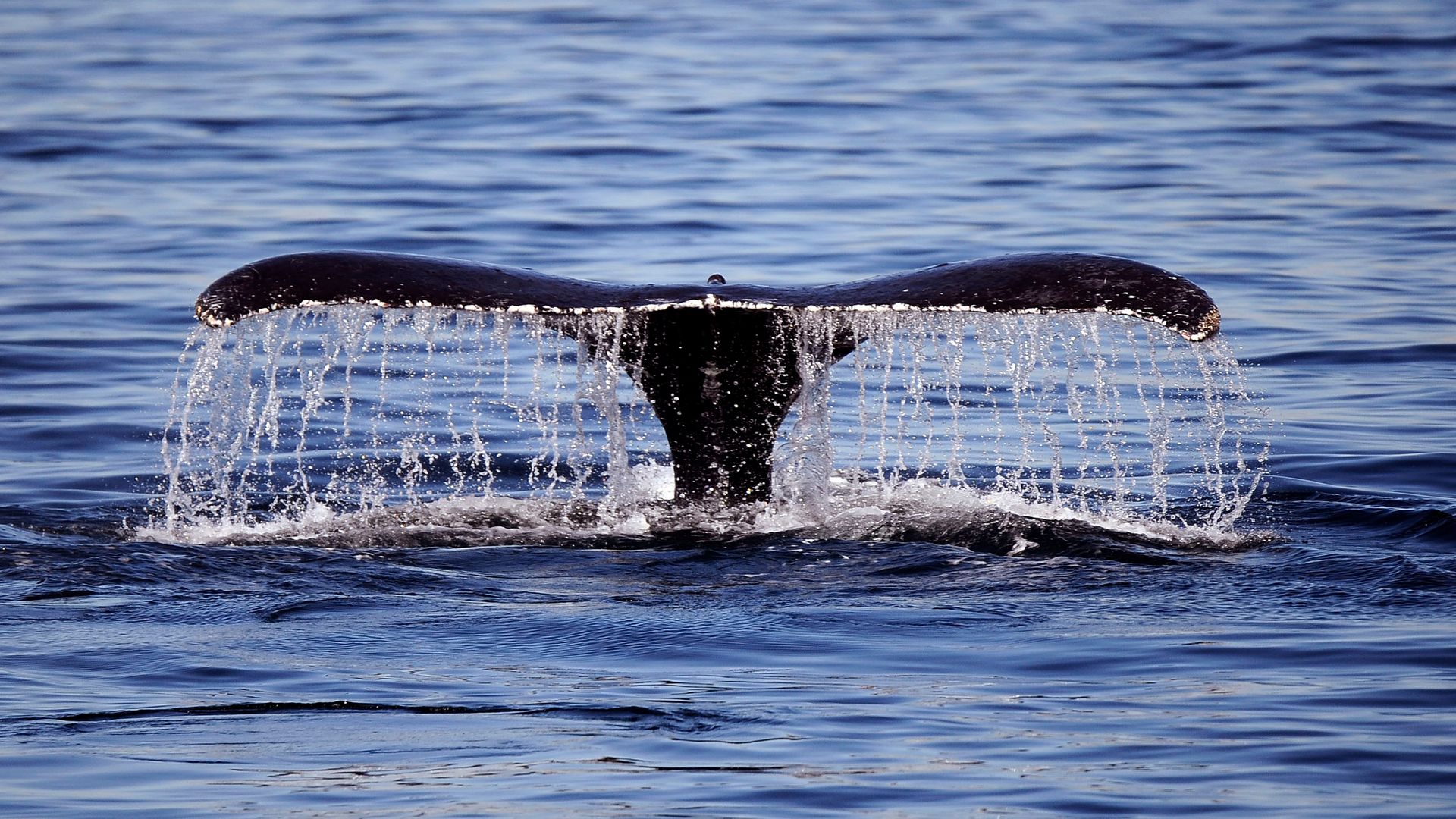
<SHANNON LONGWORTH>
OIL DRILLING
WIND FARM CONSTRUCTION,
VARIOUS HUMAN ACTIVITIES ARE MAKING NOISE IN THE OCEAN.
THE QUESTION IS: TO WHAT EXTENT DO THESE MAN-MADE SOUNDS AFFECT THE MARINE MAMMALS THAT CALL THESE WATERS HOME?
<MEGHAN LAPP>
“Now, if whale can’t hear, they rely very, very heavily on their ability to hear. They can get hit by ships, they get disoriented, all kinds of things.”
<SHANNON LONGWORTH>
THAT’S WHAT RESEARCHERS IN NORWAY WERE TRYING TO FIND OUT…UNTIL A WHALE DIED IN THEIR CUSTODY. ANIMAL ADVOCATES ACCUSED THEM OF CRUELTY.
<MEGHAN LAPP>
“What they’re doing is they’re herding them into like giant fish pens in the Norwegian fjords, then they’re catching them and putting them in a sling, and then putting electrodes under their skin and blasting them with sound and then seeing what happens.”
<CINDY ZIPF>
“They’re trying to corral Minke whales capture a few, put them in a harness and blast them with some noise to see what happens to them.”
<SHANNON LONGWORTH>
THIS WORK STARTED IN 2021 AND IS RUN BY THE NORWEGIAN DEFENCE RESEARCH ESTABLISHMENT.
BUT FUNDING HAS COME FROM THE U.S. NAVY, AND OTHER GOVERNMENT AGENCIES–AS WELL AS ENERGY COMPANIES.
ACCORDING TO THE ANIMAL WELFARE INSTITUTE, THE U.S. HAS SPENT THREE POINT SEVEN MILLION DOLLARS FUNDING THIS TYPE OF RESEARCH.
BUT OVER ITS THREE YEARS OF OPERATION, THE PROJECT DOESN’T HAVE ANY DATA TO SHOW.
AND, AFTER THAT WHALE DIED, THE PROJECT IS ON HOLD.
<CINDY ZIPF>
“They haven’t been able to actually do the study because the whales are freaking out about being in a harness and you know, being tortured, like, so they’re not able to conduct the experiments.”
<MEGHAN LAPP>
“So I think the first year they didn’t catch any. And then the second year, they caught to one of them, they got up in the sling. And shockingly, the whale was in extreme distress. And they couldn’t do any experiments. And then after that one of them got tangled up in a rope or something and died.”
<SHANNON LONGWORTH>
RESEARCHERS SAY THE WHALE DIED AFTER IT WAS TRAPPED UNDER A BARRIER NET AND DROWNED AS A RESULT OF DAMAGE TO THE TESTING FACILITY CAUSED BY SEVERE WEATHER.
THE DEATH OF THIS MINKE WHALE SPARKED CALLS FROM NUMEROUS ANIMAL RIGHTS GROUP FOR THE STUDY TO BE PERMANENTLY SHUT DOWN. THE STUDY’S CHIEF REACHER SAID THIS INCIDENT WAS QUOTE “THE WORST THING THAT COULD HAPPEN.”
OPPONENTS OF THIS RESEARCH HAVE ADVOCATED FOR AGENCIES IN NORWAY AND THE U.S. TO RESCIND PERMITS AND FUNDING FOR THE PROJECT, CALLING THE EXPERIMENT AN ACCIDENT WAITING TO HAPPEN FROM THE START.
THEY ALSO CLAIM THAT NORWAY, ONE OF ONLY THREE NATIONS WHICH STILL ALLOWS THE PRACTICE OF WHALING FOR PROFIT, WAS SPECIFICALLY CHOSEN AS THE LOCATION FOR THIS STUDY IN AN EFFORT TO CIRCUMVENT SAFEGUARDS UNDER THE U.S. MARINE MAMMAL PROTECTION ACT THAT MIGHT HAVE PROHIBITED SOME OF ITS PRACTICES.
WHILE THE STUDY’S METHODS HAVE COME UNDER FIRE, THE DATA THEY WERE TRYING TO OBTAIN IS INCREDIBLY VALUABLE TO SCIENTISTS.
THERE’S A LOT WE DON’T KNOW ABOUT HOW SOUND AFFECTS MARINE MAMMALS. THAT INFORMATION WOULD HELP EXPERTS DEVELOP MEASURES TO PROTECT WHALES FROM HUMAN NOISE IN THE OCEAN.
A RECENT SPIKE IN WHALE DEATHS OFF THE U.S. EAST COAST HAS BROUGHT SCRUTINY UPON THE MULTIPLE OFFSHORE WIND PROJECTS CURRENTLY BEING DEVELOPED IN THOSE WATERS.
BOTH GOVERNMENT AGENCIES AND RENEWABLE ENERGY PROVIDERS HAVE CONCEDED THE NOISE FROM BUILDING AND OPERATING THESE TURBINES MAY NEGATIVELY IMPACT WHALES.
THEY MAINTAIN THAT ANY DETRIMENTAL EFFECTS TO THE ANIMALS WILL BE MINIMAL, BUT OTHER EXPERTS SAY THIS STILL REMAINS UNCLEAR AND MORE RESEARCH IS NEEDED.
<MEGHAN LAPP>
“They’re doing this to try to get hearing data on low frequency baleen whales? Because they have none. And those are the whales that are washing up dead on the East Coast since December. There have been like 56 dead whales on the East Coast.”
<SHANNON LONGWORTH>
SCIENTISTS THINK MORE DATA COULD HELP SHED INCREASED LIGHT ON THE CAUSES BEHIND THIS ISSUE.
IT’S A STORY WE’LL BE TAKING A DEEPER DIVE INTO DURING OUR UPCOMING STRAIGHT ARROW NEWS ORIGINAL REPORT ON THE SUBJECT.






